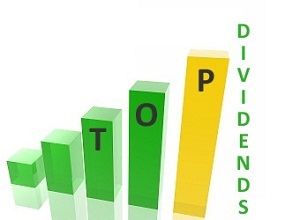When Can I Retire
One of the pressing money questions that many people have is the following: When can I retire? Retirement means something different to each person.
When figuring out when you can retire, it is important to consider what your idea of retirement is, and then focus on making your own personal vision of retired life come true. With the right planning, you should be able to live the life you want after you retire.
There are a few items to consider as you attempt to answer the question, when can I retire?
- What you want to do.
- How much money you have now.
- What you save in order to have what you need later.
- Your debt obligations, and how fast you can pay them down.
- Your regular expected expenses (groceries, utilities, etc.).
- How you spend your money.
- The lifestyle you want during retirement.
- Where you expect your income to come from.
Keep these considerations in mind as you make your plans. They will help you stay focused at each stage of the planning, providing guidance.
Understanding What You Need to Retire
Your first step is deciding what you need to retire. Consider your expected expenses, as they relate to what you want to do when you stop working. Someone who wants to downsize and move into a retirement community, while adopting an inexpensive hobby and traveling only occasionally to visit family has completely different needs that someone who wants to travel the world, living in various countries for extended periods of time.
 Think about what you want you want to do, and estimate what it will cost to make it happen. You can use your current expenses as a good baseline. You can assume that your utility costs, housing costs and some of your other costs will be somewhat similar. If you plan to have your home paid off by the time you retire, you can consider what you might do with a monthly mortgage payment you no longer have to make. It could go toward paying rent in another country, or for airplane tickets.
Think about what you want you want to do, and estimate what it will cost to make it happen. You can use your current expenses as a good baseline. You can assume that your utility costs, housing costs and some of your other costs will be somewhat similar. If you plan to have your home paid off by the time you retire, you can consider what you might do with a monthly mortgage payment you no longer have to make. It could go toward paying rent in another country, or for airplane tickets.
Many people figure that they will have expenses similar to what they pay now during retirement; careful wealth management means that they simply change what they are spending their money on as they approach retirement, paying off obligations so that the money can be spent on other pursuits.
How Much Money Do You Need to Retire?
Rather than thinking about amassing one huge nest egg, it can be helpful to think of your retirement needs based on monthly income. When can I retire? is a question that depends on when you will have the monthly income you need to keep things going. This income can come from what you earn from your retirement accounts as well as from sources of passive income that you might have cultivated.
Many people try to accumulate $1 million when they retire. If you manage to build a nest egg with $1 million, and you withdraw 4% a year, that’s $40,000 a year – about $3,333.33 a month. Is that going to be enough for you to meet your dreams when you retire? For some people, especially those who have no debt and are careful about their expenses, that is more than enough, even when travel is involved.
You can figure in Social Security as well. Look at your most recent Social Security statement to see your estimated benefit, and when it starts. It might be that if you wait on a sufficient Social Security benefit, you will be much older when you retire. Or Social Security may not even be around when you retire.
At any rate, add up your expenses, and decide how much money you need each month to live on. If you decide that you will need $4,500 to live on, you can see that simply amassing $1 million in your nest egg isn’t going to do it – unless you are willing to withdraw more than 4% each year, running a greater risk of running out of money before you run out of retirement. By planning now, you can begin to develop the resources that will help you enjoy a successful retirement.
Developing a Monthly Income for Retirement
Part of your retirement plans should revolve around building up a nest egg in tax advantaged retirement accounts. 401ks and IRAs are great tools that can help you put your money to work for you. You can use an online retirement calculator to see how long it would take you to get the nest egg you are looking for. These calculators will also help you estimate how much money you will need to set aside each month if you want to retire at a certain age. You then need to decide what you are willing to give up now for a better retirement later.
You can also consider building alternative income streams now that will be available later. This type of income diversity can be helpful in the event that there is a stock market crash just before your retirement. Instead of finding almost your entire retirement income at the mercy of the whims of the market, you can have supplemental sources of income. Alternative income streams can include income from a business, real estate, a web site or the best dividend paying stocks.
Another benefit to cultivating alternative income streams is that you can retire sooner. If you withdraw funds from a tax advantaged retirement account early, you will have to pay penalties. And, in order to get better Social Security benefits, you need to wait longer. If you have alternative income, you can begin the process of retirement sooner, since you will have money, penalty-free, at an earlier date.
Really, the key to answering the question, When can I retire? is figuring out when you want to retire, and then making it happen. Decide when you would like to retire, and begin setting aside money, paying down debt and cultivating multiple income streams so that you can reach your goals.



